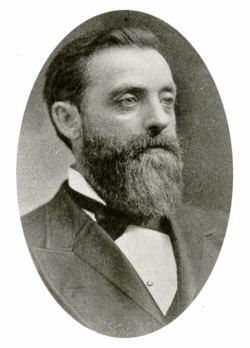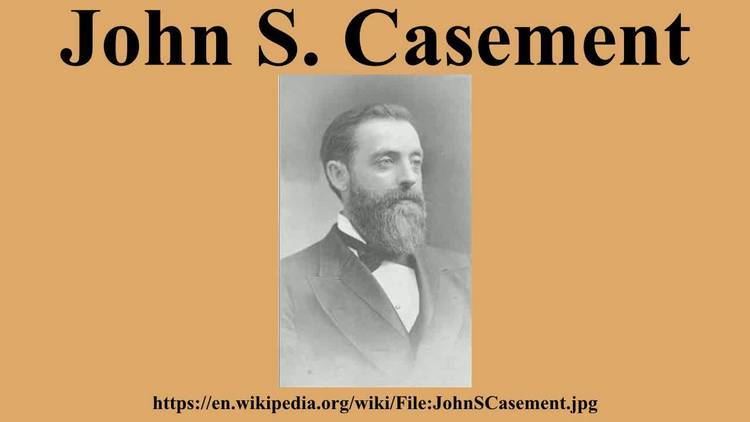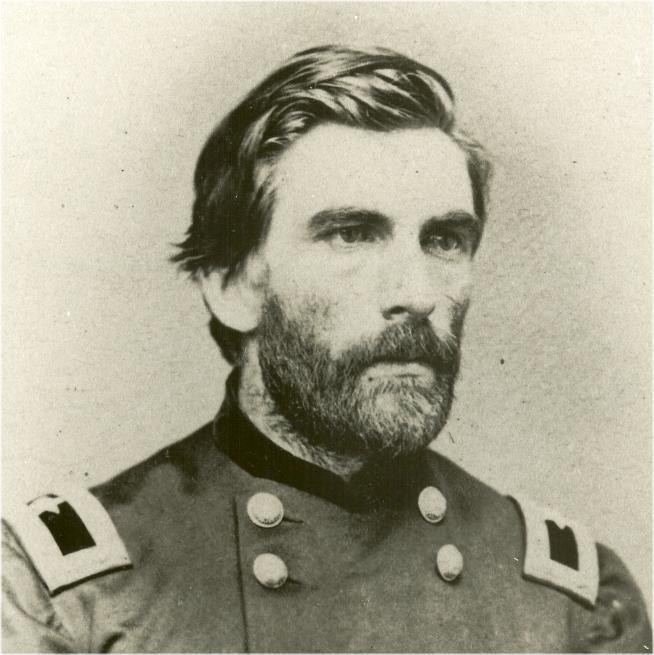Nickname(s) "General Jack" Years of service 1861 – 1865 | Name John Casement | |
 | ||
Full name John Stephen Casement Born January 19, 1829Geneva, New York ( 1829-01-19 ) Battles/wars American Civil WarSiege of KnoxvilleAtlanta campaignBattle of FranklinBattle of NashvilleBattle of Wilmington Other work Directed the Union Pacific work crews during construction of the Transcontinental Railroad Battles and wars Knoxville Campaign, Atlanta Campaign Allegiance United States of America, Union | ||
John Stephen "Jack" Casement (January 19, 1829 – December 13, 1909) was a general and brigade commander in the Union Army during the American Civil War and a noted railroad contractor. He directed the construction of the Union Pacific's section of the Transcontinental Railroad, which linked the Western United States with the East.
Contents

Early life and career

John S. Casement was born in Geneva, New York. He worked as a railroad contractor before marrying Frances Jennings in 1857.
Civil War

Just a few years later, as the Civil War was beginning in 1861, he was appointed as a major in an Ohio volunteer infantry regiment and served in the Shenandoah Valley against Confederates under Stonewall Jackson. After his heroic actions at the Battle of Winchester, March 23, 1862, Casement was appointed colonel of the newly formed 103rd Ohio Volunteer Infantry and fought in the operations around Knoxville.

He continued to lead his regiment during the first phase of the Atlanta Campaign in 1864. During the Siege of Atlanta, he assumed command of the 2nd Brigade, 3rd Division, XXIII Corps. His brigade held the center of the Union line at the Battle of Franklin, where his commanding officer, Jacob D. Cox, credited him with "saving the day for the Union."
He was appointed as a brigadier general by brevet commission in January 1865 and was transferred to North Carolina along with the rest of the XXIII Corps. During the Carolinas Campaign, he took a prominent part in the Battle of Wilmington, which was to be his last major combat.
Postbellum career
After the war, he resumed his involvement in the burgeoning railroad industry. In 1866, Thomas Clark Durant appointed Major General Grenville M. Dodge as the chief engineer for the Union Pacific Railroad during the construction of the Transcontinental Railroad. Dodge hired Casement and his brother Daniel to direct the construction crews. Daniel Casement was responsible for financing the operations, while John directed the construction crews who took to calling their boss "General Jack." The brothers oversaw the construction from Fremont, Nebraska, to the railroad's completion at Promontory, Utah.
As Casement’s crews pushed across the plains they were followed by a large contingent of “camp followers” who provided such indulgences as prostitution, liquor, gambling, and other services for the laborers. This ever moving assemblage of rail workers and hangers-on became known as Hell on Wheels. As well as being descriptive of daily life at “end track,” the term has now become further enshrined by an eponymous TV series, Hell on Wheels (TV series).
In 1867 when the Union Pacific crossed into what was to become the Wyoming Territory, Casement, a popular figure, was elected to be Wyoming’s first Representative in Congress. After a long struggle, Congress ruled that the election was illegal and Casement was never seated.
Legend has it that when the Golden Spike was to be placed to mark the completion of the transcontinental railway, the driving of the spike was to be done by Leland Stanford, President of the Southern Pacific. When Stanford was unable to hit the spike properly, Casement supposedly took the spike maul and drove it himself but the story is probably apocryphal.
After the completion of the transcontinental railway Casement continued to be active in railway construction and even played a role in the construction of a second route to the Pacific, this time in Costa Rica.
Casement had the misfortune to be in San Jose, California when the 1906 San Francisco earthquake struck. Staying at the Vendome Hotel with his wife, he was pinned in his bed and suffered three broken ribs when parts of the hotel collapsed. Although he survived this encounter, his full health never returned.
Casement died in Painesville, Ohio, on December 13, 1909. Casement Airport is named in his memory, as was a World War II liberty ship, the SS John S. Casement.
